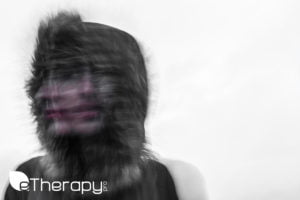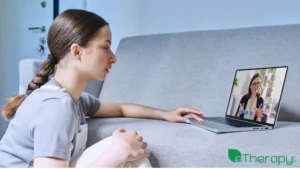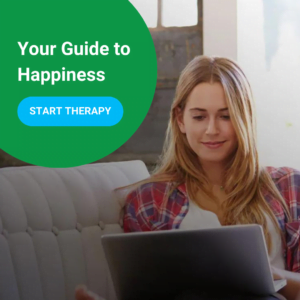If you think you might be suffering from anxiety or someone has suggested it as an explanation for what you are going through, you may be wondering how to find out for sure. This article explains how to test The Anxiety Hypothesis.
the
/T͟Hē,T͟Hə/
determiner
Used to point forward to a following qualifying or defining clause or phrase.
anx·i·e·ty
/aNGˈzīədē/
noun
A feeling of worry, nervousness, or unease, typically about an imminent event or something with an uncertain outcome.
hy·poth·e·sis
/hīˈpäTHəsəs/
noun
A proposed explanation made on the basis of evidence as a starting point for further investigation.
Anxiety is a natural and common response to all kinds of life circumstances. We all experience it in varying degrees in our day to day lives and it’s an excellent survival skill – when it’s working correctly. If you are going through difficulties right now you can be sure anxiety is a part of your life. It’s natural and appropriate to feel in a variety of situations including, but not limited to, diagnosis of a disease, loss of employment, infidelity, or facing an immediate danger.
This article isn’t about the natural anxiety that comes to us all from time to time. It’s about prolonged generalized anxiety that happens even when there is no disease or danger. Prolonged anxiety can happen as a result of the above circumstances but also for no apparent reason at all. Sometimes it is the reverse of the above scenarios – an unending feeling of worry and fear that eventually leads to a false belief that there is a disease or an immediate danger.
What causes the feeling of uneasiness? It’s different for everyone but the common theme is that your mind perceives danger where there likely is none. For some people it’s easy to identify the situations that trigger the anxiety. Perhaps they feel uncomfortable and awkward in social situations so they may experience anxiety associated with being exposed to people. It’s unlikely that this person will encounter any real danger chatting with coworkers in the break room but doing so might terrify them. For these people it’s easier to accept that undue anxiety is wreaking havoc in their lives.
There is another group of anxiety sufferers who can’t easily tell what’s causing their symptoms. These people believe they are too strong to be affected by any stress or emotions. When anxiety is a part of their lives long enough, they will start to experience strange physical symptoms such as a tightness in their chest, a shortness of breath, or heart palpitations. They immediately suspect there is something wrong with their body and quickly wind up in the doctor’s office or emergency room. Thus begins a quest to discover what their malady might be. The more tests that come back negative the more they worry and the worse their symptoms become.
First, experiencing anxiety is no weakness – it is part of the human condition and one of the most powerful survival skills we have. Second, although I don’t know your situation and can’t say for sure, it is likely that anxiety can explain all the symptoms you are currently experiencing. For a complete list do a Google search for “anxiety symptoms”. For now, here are just some sensations anxiety can cause:
-
Elevated heart rate for days or weeks on end
-
Chest pain
-
Heart Palpitations
-
Tightness in chest
-
Shooting pains in back, chest, face
-
Difficulty breathing
-
Numbness in hands, feet, head
-
Scalp pain
-
Severe headaches
-
Pain and soreness all over the body
-
Twitches & tightness
-
Muscle spasms
-
Pain in joints
-
Insomnia
-
Burning / Tingling skin
-
Severe neck and back pain
If you are in situation in which you suspect anxiety might be the cause of your unusual sensations there is a way you can experiment on The Anxiety Hypothesis and find out for sure. Before moving on it’s important to say that this article is not an instruction to quit seeing your doctor. If you have been consulting with a doctor and doing tests to discover the source of your symptoms please print this out and discuss the possibility of anxiety with them. You should continue to work with your doctor while you conduct your experiments.
Before discussing these experiments I want to tell you that you can gather important data from the times when you feel your uncomfortable symptoms. I wouldn’t knowingly encourage you to take action that would cause them to flare up but you can gather data when they naturally occur. Start taking notes when you notice that you are starting to feel off. Were you running late for work? Did you just read a bit of disturbing news? Were you in a crowd? Did you watch a thriller? Were you thinking of something negative?
Ask yourself if something in your environment might reasonably trigger anxiety or a panic attack. You may find the data you gather taking these notes will show a pattern. It may reveal that although sometimes your strange symptoms seem to occur for no apparent reason, they do consistently flare up in situations in which any person might experience anxiety. This will give you some support for The Anxiety Hypothesis.
Now on to positive experiments you can conduct. I call them prevention and distraction.
Prevention is making positive and healthy changes in your lifestyle. For example, you might change your diet and exercise regime or you could start practicing mindfulness. As the name implies, you don’t do the preventive measure when you are feeling anxious. Some prevention takes place throughout the day, like choosing to cut out caffeine. Others, like exercise or mindfulness, should ideally be done at the same time every day. Just pick one thing you are going to change for the better and start.
For people that are feeling anxiety it can be difficult to feel motivated to make these types of positive changes in your life so the goal here is to make sure you are consistent. In other words, the frequency of these activities is more important than the duration. Start small. Here are some examples. For diet, try making sure you drink the recommended 64 ounces of water every day. For exercise, try doing a minute of stretching at the same time every day. For lifestyle, try cutting out TV/internet for 30 minutes prior to bed. For mental health, try spending a few minutes outside appreciating nature each day.
The idea here is to make one small and consistent positive change in your life. Try to increase the duration over time if you can. So a minute of stretching every day might turn into five after a couple of weeks. These types of changes are good for you even if your challenge isn’t anxiety. But if it is what ails you, prevention measures should help to reduce it just a bit and that should be enough to give you data to support The Anxiety Hypothesis. In other words, if making these changes reduces your symptoms you will know that anxiety is a factor, if not the entire problem.
Distraction experiments are ones you conduct when you start to feel your unusual sensations coming on or even when you are having a full blown panic attack. As the name implies, you are going to try and distract yourself. It’s important to note here that distraction will not cure anxiety. It’s merely an effective tool to diagnose it and reduce your immediate symptoms. If you don’t believe your problem is anxiety you will never accept it and you will keep fighting which will make your symptoms worse. But if you can use distraction to convince yourself that anxiety is your challenge, you will be able accept it. Acceptance is the best way I know of to overcome anxiety and heal permanently. So, distraction doesn’t resolve anxiety but it puts you on the pathway there.
What was I talking about?…oh right, distraction! Put together a list of 3-5 activities you can do that will engage both body and mind – activities that require you to think and move at least a little. Do not attempt to meditate as a distraction. That’s more of a prevention tool. The idea with distraction is to see if engaging in the activity reduces your sensations or feeling of unease. If it does, you will have some data to support The Anxiety Hypothesis.
So, keep it simple. Puzzles are good. Models are good. Coloring books for grown ups. Legos are great – especially a set with instructions. A Rubik’s Cube works. Just about any craft or woodworking project will do. When you first start to feel off head to the distraction. It may not be easy but remember, this is an experiment.
Try to follow these rules. Have a couple of distractions ready. So go prepare the puzzle or craft now and have it all ready to go. Make sure at least one distraction is portable like a coloring book or handheld puzzle. Only use the distraction when you are feeling off or you think panic is coming on. Perform the distraction experiment for no more than ten minutes at a time then check how you feel. If you feel a little bit better you can do more and see if the improvement continues.
If you incorporate either prevention or distraction or both and notice that it is having a positive effect on your “symptoms” then you have gathered data that validates The Anxiety Hypothesis. The more you do this the more convinced you will be that anxiety is the real problem. And proving this to yourself is the first step toward healing.
Start your Free trial of online counseling and discuss The Anxiety Hyppthesis with a counselor today.









